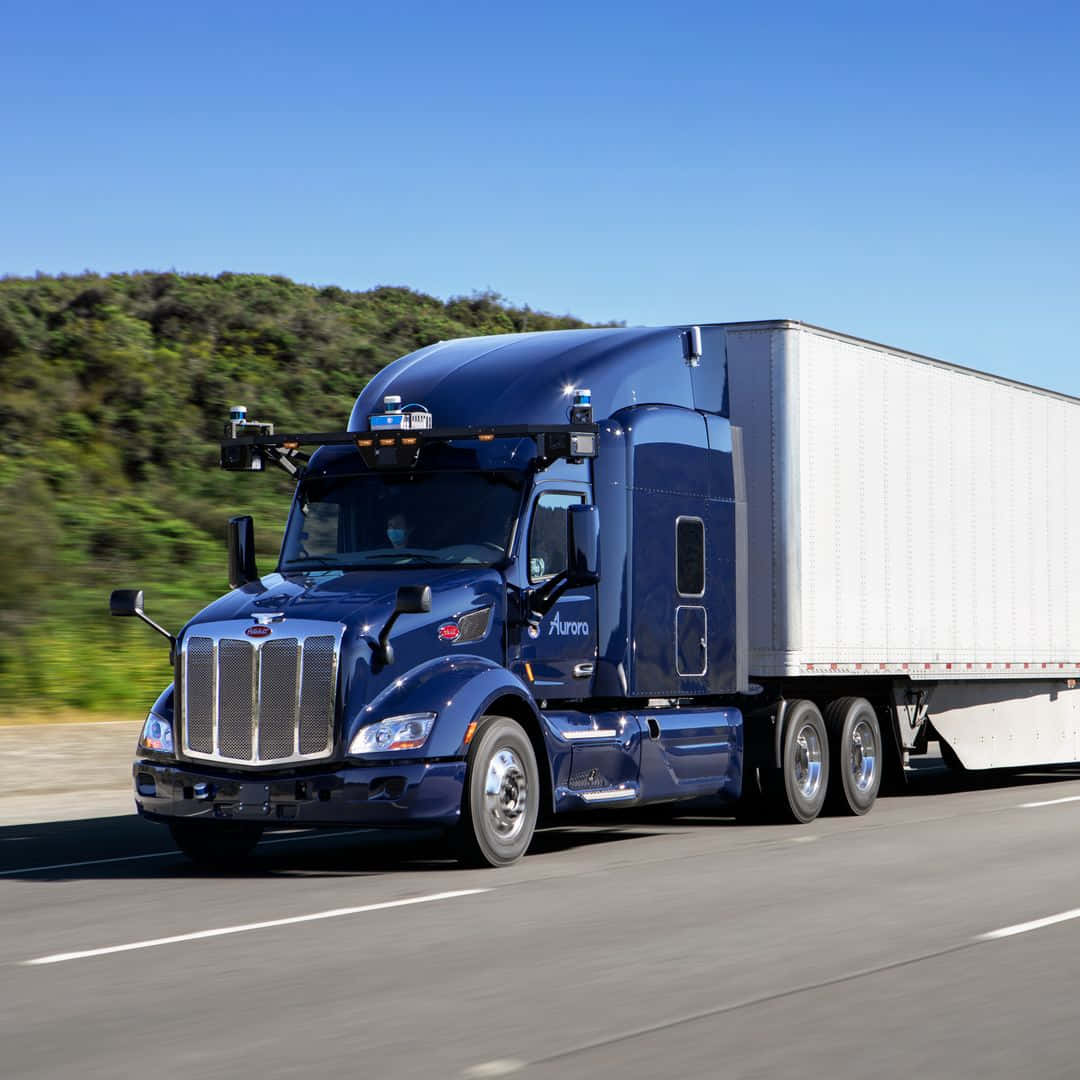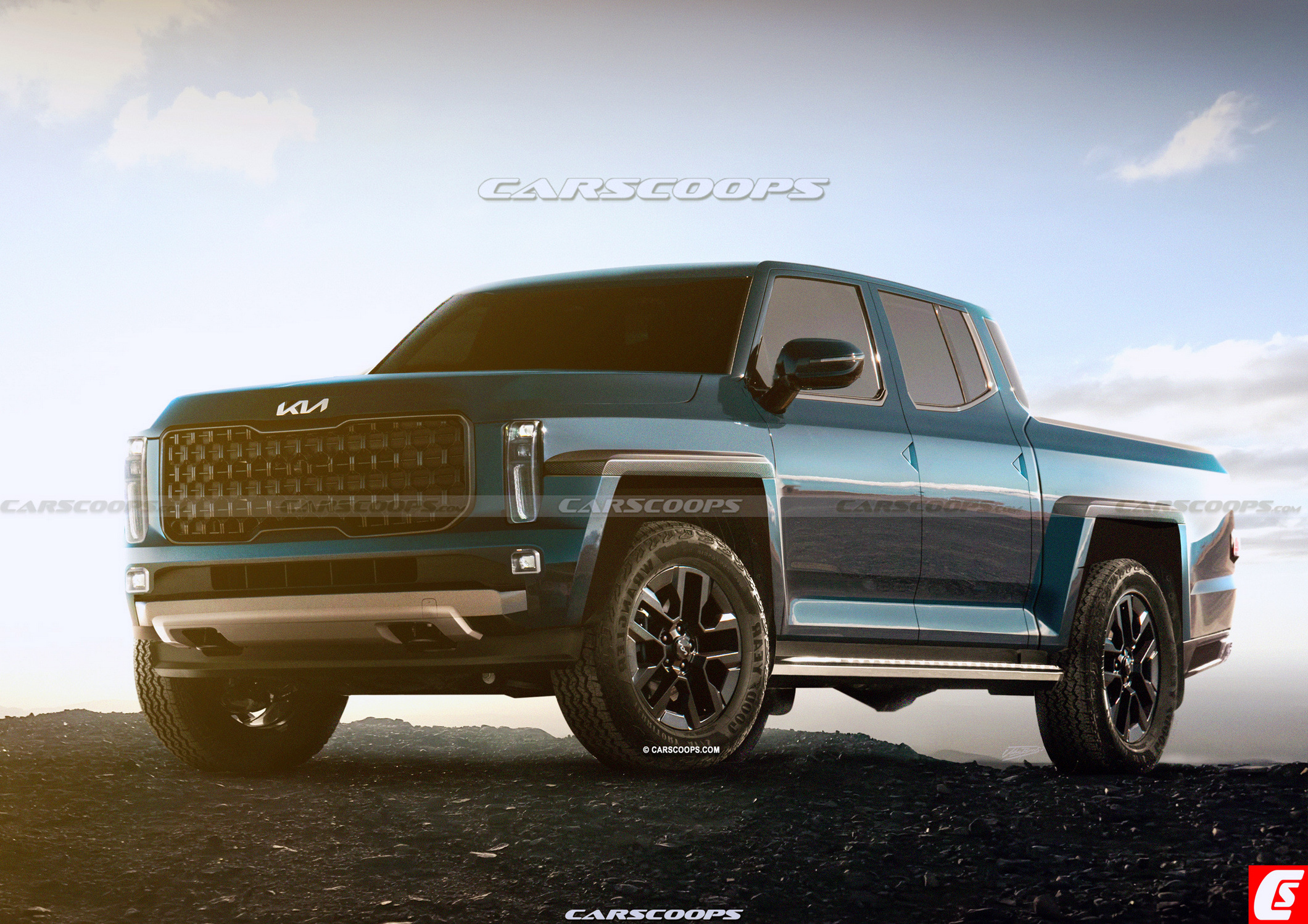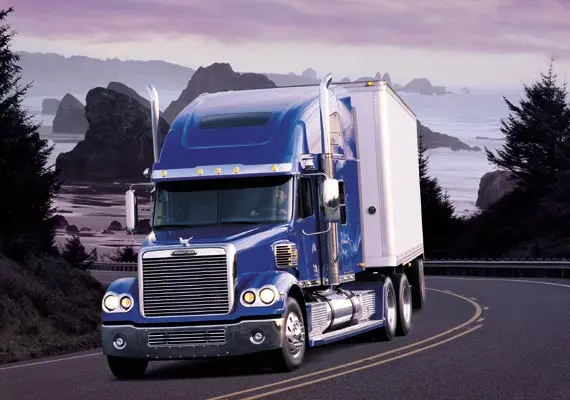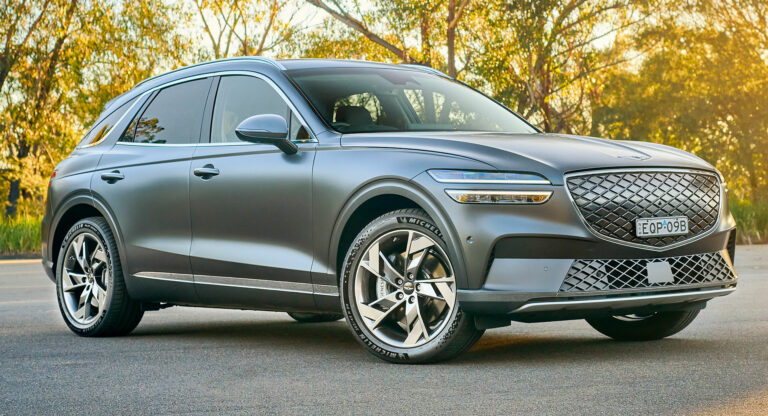The Mobile Sanctuary: Exploring the Truck That Has a Fridge and a Sleeping Bed Inside
The Mobile Sanctuary: Exploring the Truck That Has a Fridge and a Sleeping Bed Inside cars.truckstrend.com
In the vast landscape of commercial transportation, few innovations have had as profound an impact on the lives of long-haul truck drivers as the integration of comfortable living amenities directly into their rigs. Often referred to colloquially as a "truck that has a fridge and a sleeping bed inside," this configuration is, in professional terms, a sleeper cab truck equipped with a built-in refrigerator and other essential amenities. Far from being a luxury, these mobile sanctuaries are critical components of modern trucking, transforming a mere vehicle into a driver’s home away from home.
This article delves deep into the world of these self-contained trucking units, exploring their design, the myriad benefits they offer, essential considerations for those looking to acquire one, and practical tips for maximizing the mobile living experience. We’ll navigate the practicalities, the comfort, and the undeniable importance of these rolling residences in an industry that never sleeps.
The Mobile Sanctuary: Exploring the Truck That Has a Fridge and a Sleeping Bed Inside
The Anatomy of a Mobile Home: What’s Inside?
A modern sleeper cab truck is a marvel of compact engineering, designed to provide a comfortable and functional living space within the confines of a commercial vehicle. The two cornerstone features are, as the name implies, the sleeping area and the refrigeration unit, but the full picture includes a host of other thoughtful additions.
The Sleeper Berth: A Driver’s Retreat
The "sleeping bed inside" is far more than just a mattress tucked away. It’s a dedicated living and resting area, known as a sleeper berth or sleeper cab. These vary significantly in size and sophistication:
- Standard Sleeper Cabs (36-72 inches): Commonly found in integrated designs, these offer a comfortable single bunk, often with an upper bunk for team drivers or extra storage. They typically include climate controls, lighting, and storage compartments.
- Mid-Roof & High-Roof Sleepers (72-100+ inches): These larger sleepers provide more headroom, wider beds, and often come with more expansive storage, wardrobe closets, and even convertible sofa beds. Custom and extended sleepers can approach the size of a small RV, featuring full stand-up room, kitchenettes, and dedicated entertainment zones.
- Key Features: Beyond the bed itself, sleeper berths include power outlets (both 12V DC and often 120V AC via an inverter), reading lights, privacy curtains, ventilation windows, and often mounts for televisions or other entertainment systems. Advanced models might have built-in desks, dining tables, and even small lavatories.

The Integrated Refrigerator: Freshness on the Go
The "fridge inside" is an indispensable amenity for any long-haul driver. While portable coolers have their place, an integrated refrigerator offers superior performance, efficiency, and convenience.
- Types: Most trucks come with purpose-built 12V DC refrigerators designed to withstand the vibrations and temperature fluctuations of the road. They can be compact units suitable for drinks and snacks, or larger models capable of storing a week’s worth of groceries. Some high-end trucks even feature freezer compartments.
- Benefits: Having a fridge allows drivers to store fresh food, prepare healthier meals, and significantly reduce reliance on expensive and often unhealthy fast food or truck stop meals. This translates directly into cost savings, improved diet, and better overall health.
- Power Source: These units run directly off the truck’s 12-volt electrical system, often with low power consumption designed for continuous operation. Many modern trucks have dedicated battery banks or Auxiliary Power Units (APUs) to power these appliances without idling the main engine.

Other Essential Amenities

Beyond the core two, a well-equipped sleeper truck often includes:
- Power Inverters: To convert the truck’s 12V DC power to standard 120V AC household current, allowing drivers to power microwaves, coffee makers, laptops, and other electronics.
- Auxiliary Power Units (APUs): Self-contained units that provide electricity for climate control (heating and air conditioning) and power for appliances without needing to idle the main engine, saving fuel and reducing engine wear.
- Microwave Ovens: Essential for heating pre-prepared meals.
- Storage Solutions: Extensive cabinets, drawers, and under-bed storage for clothes, personal items, and supplies.
- Entertainment Systems: Pre-wired for TVs, satellite radio, and often with USB charging ports.
- Climate Control: Dedicated HVAC systems for the sleeper area, often independent of the main cabin.
The Indispensable Benefits of a Self-Contained Truck
The integration of a fridge and sleeping bed inside a truck is not just about comfort; it’s about enhancing driver well-being, improving operational efficiency, and ensuring safety in one of the nation’s most critical industries.
- Driver Comfort & Well-being: Long hours on the road can be grueling. A comfortable sleeper berth provides a private, quiet, and climate-controlled space for quality rest, which is paramount for physical and mental health. Access to a fridge allows for healthier eating habits, reducing fatigue and promoting overall wellness. This personal space also reduces the psychological strain of constant travel.
- Enhanced Productivity & Compliance: The Federal Motor Carrier Safety Administration (FMCSA) mandates strict Hours of Service (HOS) regulations to prevent driver fatigue. A comfortable sleeper allows drivers to maximize their rest breaks efficiently, often without leaving their vehicle, ensuring compliance and minimizing downtime. Well-rested drivers are more alert and productive, leading to more efficient deliveries.
- Significant Cost Savings:
- Food: Preparing meals in the truck dramatically cuts down on expensive restaurant and fast-food bills.
- Lodging: Eliminates the need for costly motel rooms, which can quickly add up over weeks or months on the road.
- Fuel: With an APU, drivers can power their amenities without idling the main engine, leading to substantial fuel savings and reduced engine wear.
- Improved Safety: Driver fatigue is a leading cause of trucking accidents. By facilitating quality rest, sleeper cabs directly contribute to safer roads for everyone. A well-fed, well-rested driver is more attentive, makes better decisions, and reacts more quickly to hazards.
- Driver Retention & Recruitment: In an industry facing a chronic driver shortage, providing a well-equipped, comfortable truck is a major incentive. Companies that invest in premium sleeper trucks with modern amenities find it easier to attract and retain experienced drivers, reducing turnover costs and maintaining a skilled workforce.
- Flexibility & Autonomy: Drivers have greater control over their schedules and resting locations. They can pull over at designated truck stops, rest areas, or even some industrial sites, knowing they have all the essentials for a comfortable stop.
Types of Trucks with Integrated Living Spaces
While the concept is universal, the execution varies across different truck classes and manufacturers, each catering to specific needs within the trucking industry.
- Class 8 Sleeper Cab Semi-Trucks: These are the most common vehicles for long-haul operations, designed from the ground up with integrated sleeper berths.
- Integrated Sleepers: The sleeper is a seamless extension of the cab, offering superior insulation, ride quality, and interior access. Manufacturers like Freightliner (Cascadia), Peterbilt (579, 389), Kenworth (T680, W900), Volvo (VNL), International (LT Series), and Mack (Anthem) offer a wide range of sleeper sizes and configurations.
- Custom & Aftermarket Sleepers: Some owner-operators opt for highly customized sleeper units, often built by specialized companies, which can extend to 150 inches or more, providing amenities rivaling small apartments. These can be added to day cabs or replace existing smaller sleepers.
- Medium-Duty Trucks with Sleepers: While less common, certain vocational applications or shorter regional hauls may utilize Class 6 or 7 trucks equipped with smaller sleeper berths. These are often used for specialized transport where a full Class 8 rig is overkill, but overnight stays are still required. Examples include some expedited freight or specialized service vehicles.
- Heavy-Duty Vocational Trucks: Some specialized heavy-haul trucks (e.g., severe service, logging, mining) may also feature compact sleepers, acknowledging that even on shorter, demanding routes, drivers may need to rest on-site.
Key Considerations When Choosing or Equipping Your Truck
Acquiring a truck with a fridge and sleeping bed inside, whether new or used, involves several critical decisions that impact cost, functionality, and long-term satisfaction.
- Budget & Financing:
- New vs. Used: New sleeper trucks offer the latest technology, warranties, and customization, but come with a significant price tag. Used trucks can be a cost-effective alternative, but require thorough inspection of the engine, transmission, and especially the sleeper amenities.
- Leasing vs. Buying: Explore financing options that best suit your business model and cash flow.
- Power Requirements & Management:
- 12V DC for Fridge: Ensure the truck’s electrical system can reliably power the fridge.
- 120V AC for Other Appliances: Consider the need for an inverter (size matters!) and how it will be powered (alternator, dedicated battery bank, APU).
- APU Integration: An Auxiliary Power Unit is a significant investment but offers immense long-term savings on fuel and engine wear by eliminating unnecessary idling.
- Space & Layout:
- Driver Needs: How much personal space do you need? Are you a solo driver or part of a team?
- Storage: Assess the available storage for clothes, food, gear, and personal items. Lack of storage can quickly make a large space feel cramped.
- Accessibility: Ensure easy access to the bed, fridge, and other amenities.
- Maintenance & Durability:
- Appliance Quality: Invest in durable, truck-specific appliances designed to withstand road conditions.
- Interior Materials: Look for robust, easy-to-clean materials for the interior surfaces, flooring, and upholstery.
- HVAC System: Ensure the sleeper’s climate control system is robust and regularly serviced.
- Regulations & Compliance: Be aware of weight limits, overall length restrictions, and any specific state or federal regulations regarding sleeper berths and on-board amenities.
- Personal Needs & Preferences: Ultimately, the best truck is one that fits your lifestyle. Do you value a large fridge over a big TV? Is a shower essential, or can you use truck stop facilities? Prioritize the features that will genuinely improve your quality of life on the road.
Maximizing Your Mobile Living Space: Tips & Tricks
Living in a truck, even one with excellent amenities, requires clever organization and efficient use of space.
- Strategic Organization:
- Vertical Storage: Utilize wall-mounted organizers, hanging shelves, and stackable containers.
- Under-Bed Storage: Maximize the space beneath your bunk for larger items or less frequently used gear.
- Declutter Regularly: A cluttered space leads to a cluttered mind. Only keep essentials.
- Smart Meal Prep:
- Batch Cooking: Prepare meals for several days at once and store them in the fridge.
- Simple Recipes: Focus on easy-to-prepare meals that require minimal cooking equipment.
- Utilize the Fridge & Pantry: Keep a well-stocked supply of healthy snacks, fruits, vegetables, and lean proteins.
- Efficient Power Management:
- Monitor Battery Levels: Especially if not equipped with an APU, be mindful of battery drain from the fridge and other electronics.
- Energy-Efficient Appliances: Opt for appliances designed for low power consumption.
- Solar Panels: Consider adding small solar panels to trickle-charge batteries, especially for extended stops.
- Climate Control & Ventilation:
- Optimize APU Use: Learn to efficiently use your APU for heating and cooling to save fuel.
- Proper Ventilation: Use windows, vents, and fans to maintain airflow and prevent condensation.
- Security & Safety:
- Secure Belongings: Always lock your truck, even when sleeping inside. Consider hidden compartments for valuables.
- Emergency Kit: Keep a well-stocked first-aid kit, emergency tools, and supplies.
- Situational Awareness: Be aware of your surroundings, especially at truck stops.
- Personalization & Comfort:
- Bedding: Invest in comfortable bedding. Quality sleep is invaluable.
- Personal Touches: Photos, small decorative items, and a comfortable rug can make the space feel more like home.
- Lighting: Add task lighting for reading or working, and ambient lighting for relaxation.
Challenges and Solutions
While incredibly beneficial, living and working out of a truck with integrated amenities comes with its unique set of challenges.
- Limited Space:
- Challenge: Even the largest sleeper is a confined area.
- Solution: Embrace minimalism, utilize multi-functional furniture (e.g., a bed that converts to a sofa), and implement smart storage solutions as discussed above.
- Power Consumption & Battery Drain:
- Challenge: Running a fridge, microwave, and other electronics can quickly drain batteries, especially without an APU.
- Solution: Invest in an APU, upgrade battery banks, use energy-efficient appliances, and consider small solar charging systems. Learn to manage power usage effectively.
- Maintenance of Appliances:
- Challenge: Fridges, microwaves, and HVAC systems can break down.
- Solution: Regular cleaning and preventative maintenance are key. Know basic troubleshooting steps, and have a reliable mobile mechanic or repair network for major issues.
- Loneliness & Isolation:
- Challenge: Despite having a comfortable space, the trucking lifestyle can be isolating.
- Solution: Stay connected with family and friends through video calls. Utilize truck stop communities, online forums, and social media groups to connect with fellow drivers. Plan breaks to meet up with others when possible.
- Upfront Cost of Investment:
- Challenge: Trucks with premium sleepers and amenities are more expensive.
- Solution: Conduct a thorough cost-benefit analysis. The long-term savings on food, lodging, and fuel often justify the initial investment. Explore financing options and consider well-maintained used trucks as a more affordable entry point.
Estimated Price Table: Truck with Fridge and Sleeping Bed Inside
It’s important to understand that "Truck That Has Fridge And Sleeping Bed Inside" isn’t a single product but a category of commercial vehicles with these integrated features. The cost varies significantly based on the truck’s class, age, manufacturer, condition, and the specific amenities included. The table below provides estimated price ranges for acquiring such a vehicle or adding these features.
| Category/Feature | Description | Estimated Price Range (USD) | Notes |
|---|---|---|---|
| New Class 8 Sleeper Semi-Truck | Brand new truck with integrated sleeper (mid to high roof), factory-installed fridge, and standard amenities (APU often extra). | $150,000 – $280,000+ | Price varies by manufacturer (e.g., Freightliner, Peterbilt, Kenworth), engine specs, transmission, and specific trim/amenity packages. High-end custom builds can exceed $300,000. |
| Used Class 8 Sleeper Semi-Truck | Varies greatly by age, mileage, condition, and maintenance history. Often 3-7 years old. | $30,000 – $120,000 | A popular option for owner-operators. Crucial to get a thorough pre-purchase inspection. Older models will be at the lower end, newer, well-maintained ones at the higher. |
| Medium-Duty Truck w/ Sleeper | Less common; includes smaller integrated sleepers, often for regional or specialized vocational use. | $80,000 – $180,000 (New) | Niche market, typically smaller sleepers (30-48 inches), often without full standing room. Used options are less abundant. |
| Aftermarket Sleeper Installation | Adding a standalone sleeper unit to a day cab truck, or upgrading an existing small sleeper. | $15,000 – $50,000+ | Cost depends on the size, features (e.g., bunk beds, storage, windows, insulation), and complexity of installation. Requires professional modification. |
| Integrated Truck Fridge (12V DC) | Built-in refrigerator unit designed for truck cabs, often found in OE (Original Equipment) trucks or aftermarket kits. | $300 – $1,500 | Installation costs are separate for aftermarket units. Sizes vary from compact to full-size truck fridges with freezer compartments. |
| Portable 12V Compressor Fridge | High-performance portable cooler that runs on 12V DC, offering true refrigeration. | $200 – $800 | A flexible, plug-and-play alternative to a built-in fridge, ideal for those who don’t have a factory-installed unit or need extra capacity. |
| Auxiliary Power Unit (APU) | Standalone unit for heating, AC, and electrical power without idling the main engine. | $8,000 – $15,000 | Significant long-term fuel savings and reduced engine wear. Installation is usually included in the higher end of the range. Essential for maximizing comfort and minimizing operational costs. |
| Power Inverter (Installed) | Converts truck’s 12V DC to 120V AC for household appliances (microwaves, laptops, etc.). | $300 – $1,500 | Price varies by wattage (e.g., 1500W to 3000W+ pure sine wave inverters). Installation can be complex and may require additional wiring and fuse protection. |
| Microwave Oven (Truck-Specific) | Compact, low-wattage microwave designed for truck use. | $100 – $300 | Requires a suitable inverter to operate. |
| Custom Interior Upgrades | High-end finishes, advanced electronics, bespoke storage, custom lighting, specialized seating. | $10,000 – $100,000+ | Performed by specialized custom truck interior companies. The sky’s the limit for personalization. |
Frequently Asked Questions (FAQ)
Q1: What exactly is a "sleeper cab" in a truck?
A1: A sleeper cab, or sleeper berth, is a dedicated living and resting area built into the back of a commercial truck’s cab. It typically includes a bed, storage, and climate control, allowing drivers to rest comfortably on long-haul routes without needing a motel.
Q2: Why do truckers need a fridge and a bed inside their trucks?
A2: For long-haul drivers, the truck is their home for days or weeks at a time. A fridge allows them to store fresh food, cook healthier meals, and save money on expensive truck stop food. A comfortable bed ensures quality rest, which is crucial for safety, compliance with Hours of Service regulations, and overall driver well-being.
Q3: Are all commercial trucks equipped with these features?
A3: No. While common for long-haul Class 8 semi-trucks, day cabs (trucks without a sleeper) are used for shorter routes that don’t require overnight stays. Medium-duty trucks may or may not have smaller sleepers, depending on their intended use.
Q4: How do the fridge and other appliances get power when the truck engine is off?
A4: Most integrated truck fridges run on the truck’s 12-volt DC electrical system. For 120V AC household appliances (like microwaves, coffee makers, laptops), trucks use a power inverter to convert DC power to AC. To power these without idling the main engine, many trucks are equipped with Auxiliary Power Units (APUs) or larger battery banks designed for sustained power draw.
Q5: Can I add a fridge and a sleeping bed to my existing truck if it doesn’t have them?
A5: You can certainly add a portable 12V compressor fridge to virtually any truck. Adding a "sleeping bed" (i.e., a full sleeper berth) to a day cab is a major modification, often involving specialized aftermarket companies. It’s a significant investment but possible. Many drivers also opt for custom-built beds or convertible sofas within their existing cab space.
Q6: What are some of the best brands for trucks with integrated sleepers and amenities?
A6: Top manufacturers known for their comfortable and well-equipped sleeper trucks include Freightliner (Cascadia), Peterbilt (579, 389), Kenworth (T680, W900), Volvo (VNL), International (LT Series), and Mack (Anthem). Each offers various sleeper sizes and customization options.
Q7: How much does it cost to operate a truck with these amenities?
A7: While the initial investment is higher, the operational costs can actually be lower in the long run. An APU saves significant fuel by eliminating engine idling. Preparing meals in the truck drastically reduces food expenses, and avoiding motel stays saves on lodging. These savings often outweigh the added purchase and maintenance costs over time.
Conclusion: The Evolution of the Trucker’s Home
The "truck that has a fridge and a sleeping bed inside" represents a pivotal evolution in commercial transportation. What began as basic utilitarian spaces have transformed into sophisticated mobile living environments, critical for the efficiency, safety, and well-being of the nation’s essential truck drivers. These self-contained units empower drivers with the autonomy, comfort, and resources needed to navigate the demanding life on the road.
Investing in or equipping a truck with these amenities is more than just purchasing a vehicle; it’s an investment in a sustainable and healthier lifestyle for the driver, and ultimately, a more productive and compliant operation for the trucking industry. As technology advances, we can expect these mobile sanctuaries to become even more integrated, efficient, and comfortable, ensuring that the heart of our supply chain remains robust and well-rested.






